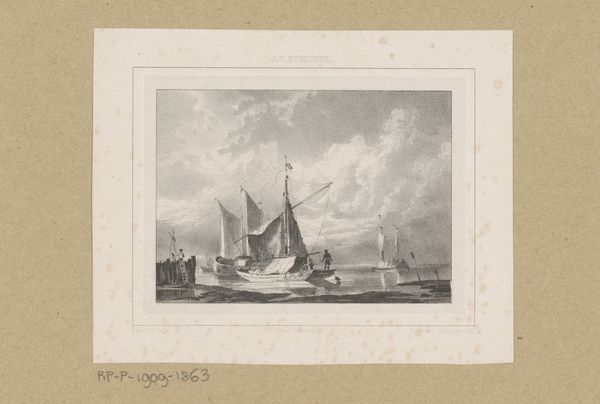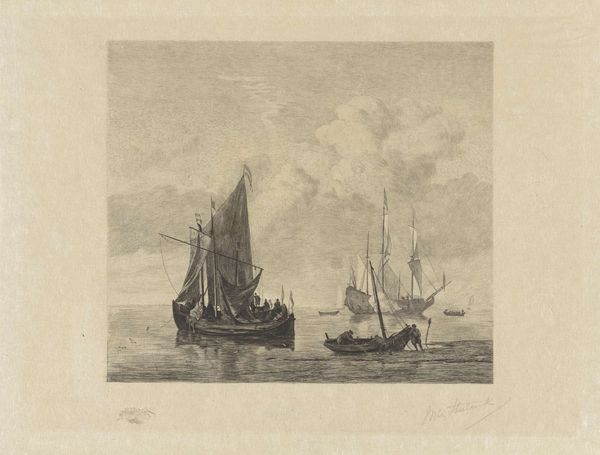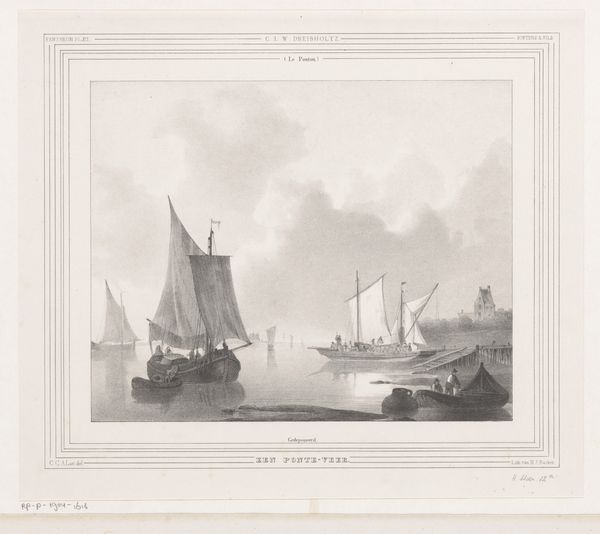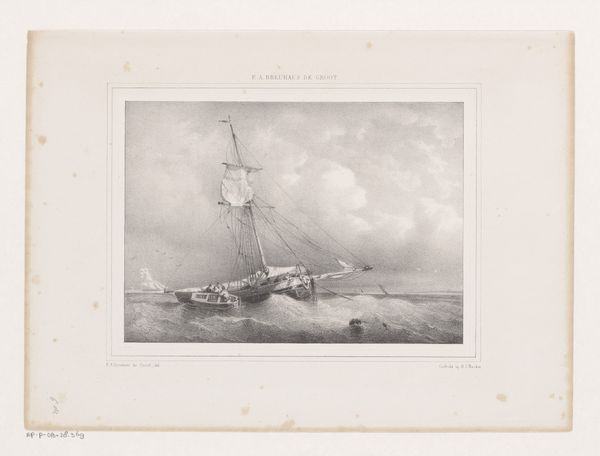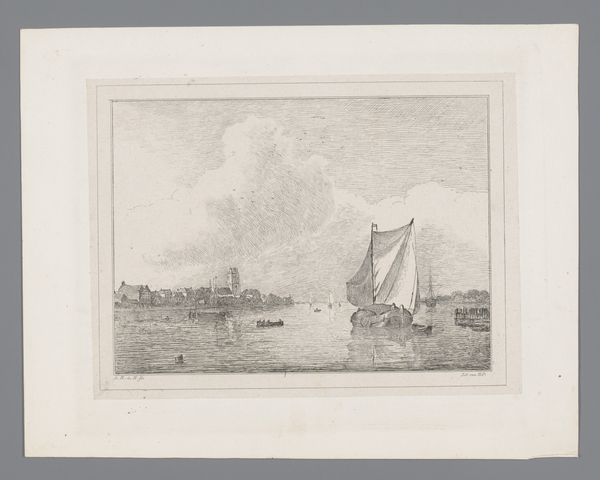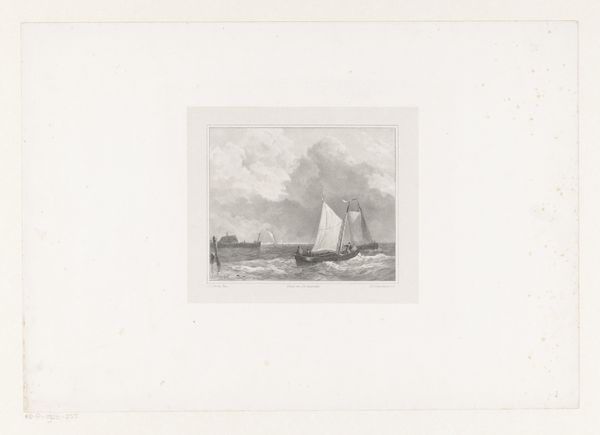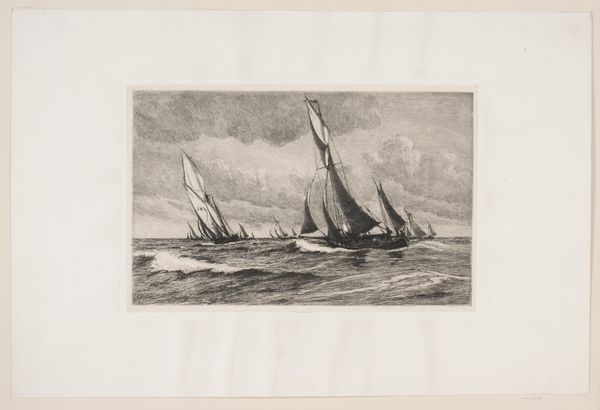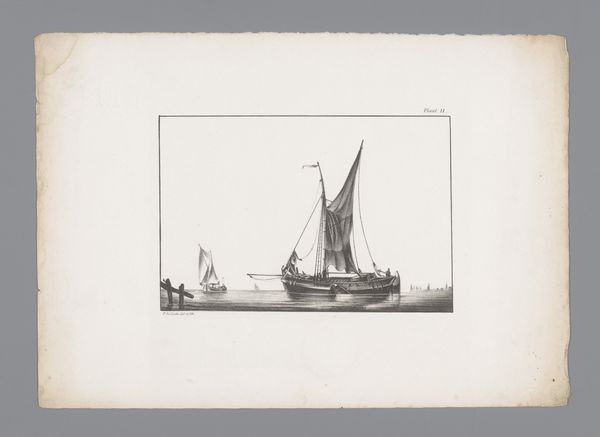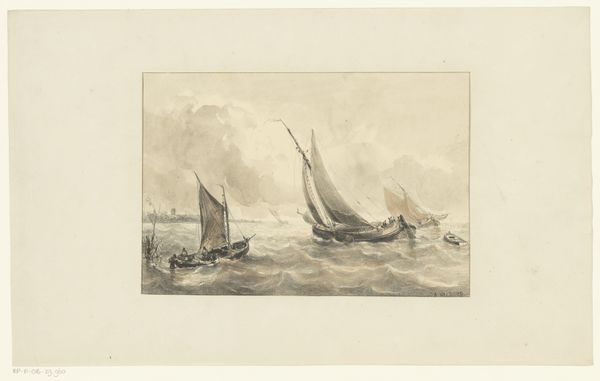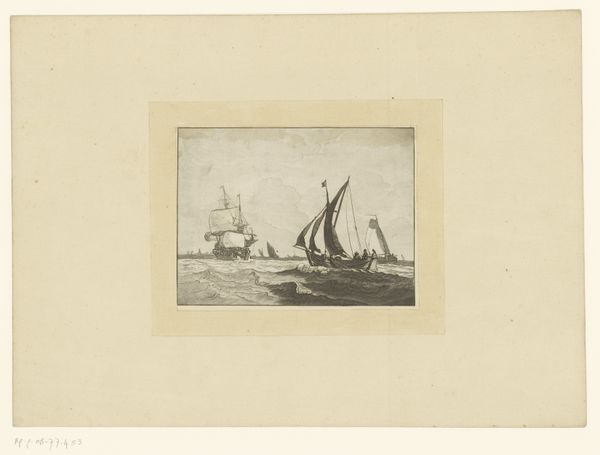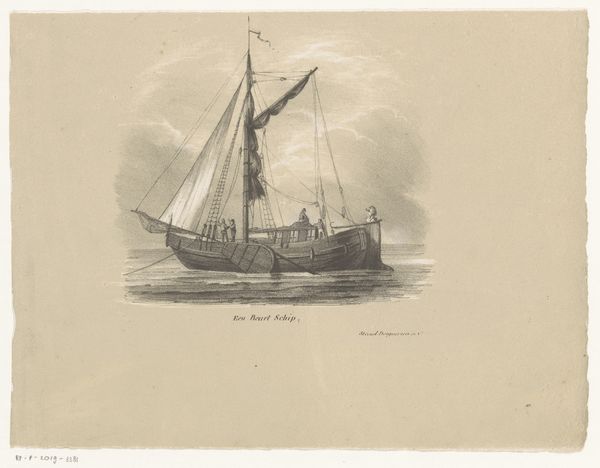
print, engraving
# print
#
landscape
#
romanticism
#
engraving
Dimensions: height 131 mm, width 157 mm
Copyright: Rijks Museum: Open Domain
Editor: This is "Zeegezicht," or "Seascape," an engraving by Paulus Lauters, created in 1829. I'm struck by the churning waves; the detail is incredible. What story can you tell me about this piece? Curator: Well, beyond the surface representation, consider the labour involved. Each line, etched by hand, signifies hours of painstaking work. How do we understand this Romantic seascape when we center the production process itself? Editor: That's a great point. I was thinking about how the Romanticism style influenced the composition, but the physicality of engraving... what can it tell us about the broader art world? Curator: In the early 19th century, printmaking served not only artistic expression but also information dissemination and market demand. How does this print democratize access to maritime imagery, previously enjoyed mainly by wealthy patrons of painting? Was it considered more "low brow"? Editor: Interesting! So the medium is the message? Curator: To an extent. But think, too, about the material consumption around prints: paper, ink, the engraver’s tools themselves. This piece becomes a node in a network of industrial and artisanal activity. Editor: So it’s not just about the artist’s vision of nature, but the whole system of making and consuming art. This connects it to larger economies and work. Curator: Precisely. By considering those tangible aspects, we see beyond Romantic individualism. How labor created and how prints were sold opens a window onto societal value systems around artmaking in the 1820s. Editor: I’ve definitely got a new perspective. Seeing it this way has shown how artwork doesn't just exist on its own. Curator: Indeed. It invites consideration of labor, industry and systems of commerce—not solely what is visible on the water.
Comments
No comments
Be the first to comment and join the conversation on the ultimate creative platform.
